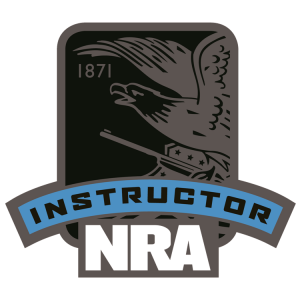Philosophy of Education
Four Levels of Competency
Classroom time is essential. It provides the “why” to the “what” and “how” for any skill you will learn. Once you have had the classroom experience or if you already know the “why”, then you are ready for range time. Range time is where the training and fun takes place. It is where you build your level of competency. For the beginner, it may either be intimidating or exhilarating. Shooting is more fun for the novice shooter when they are successful. Therefore, we overcome the anxiety for a beginner by providing the platforms for success – and then we layer skill upon skill upon that platform. The experienced shooter needs to be continuously challenged with new applicable skills and then take refresher courses and train to sharpen those skills.
Shooting is a perishable skill. In a real life encounter, your body undergoes remarkable changes which increases your focus, strength and speed but decreases your fine motor skills. Therefore, in a self defense situation where your firearm is required, the general consensus is you will only be half as good as your last best day of training. Citizen Defense exists to help you be your best if you ever need to defend yourself with a firearm.
How do we do that? By developing the knowledge, skill and attitude to move through the four levels of competency. A quick Google search will describe the four levels of competency with regard to a wide variety of skills. The goal is to progress from Unconscious Incompetent to Conscious Incompetent to Conscious Competent and finally to Unconscious Competent.
The Unconscious Incompetent – This person doesn’t know what they don’t know. If they own a firearm and stay in this state, they are a danger to themselves and those around them. Hopefully they have people in their lives who awaken them to their responsibility to get trained. If not, you don’t want to be on the range with this person – or even in their house! I was on a range one time with some folks who had a brand new AR-15. It jammed and they refused my help. Instead they were banging the butt of the rifle on the ground with the muzzle pointed straight up in the air. Frightening! But not as frightening as when the range was declared cold. I was down range when I heard shots being fired! Yep! Same folks with their AR-15. Unconscious Incompetents who should be banned from the range for good – or get trained.
The Conscious Incompetent – This person knows they are lacking the necessary skills to be proficient. In the case of a firearm, perhaps this person acquires a firearm for the first time and recognizes the need to safely learn to operate it. Or the salesman suggests specific training. Or maybe a wife wants to become more comfortable with the firearms in the house. For some this is a slow process of discovering what they do not know. They read the manual, maybe get online. Others get ahead of the curve by getting trained and taking classes. Hopefully, if you are reading this and you are a Conscious Incompetent, you will consider contacting Citizen Defense and attending one of our courses.
The Conscious Competent – This person has acquired the skills and knowledge to perform the skill; however, they have to concentrate and think about performing that skill. In the case of a firearm, they are proficient in handling and operating their firearm safely. They can fire their gun accurately, but each operation takes thought, attention and focus. Many shooters live here. They learn the skill once and call it good. They go to the range occasionally, maybe once a year, and have fun plinking and shooting targets with their buddies. If you own a firearm, obviously, this is a much better place to be than the previous two stages and it may be enough. But maybe not.
The Unconscious Competent – This person has acquired the skills and uses them effortlessly without even thinking about them. The skills are second nature to them. The shooter has a malfunction and clears their gun in less than a second without thinking about it and is back in the fight. They draw from the holster and put two shots on the target as if those shots were an extension of themselves. And they handle their firearm safely without thinking about it. It’s just what they do. They have become a master of sorts. This level of competency takes training and lots of practice, both dry practice as well as time on the range. Citizen Defense would love to put you on the path of becoming an Unconscious Competent.

Four Rules of Firearm Safety
1. All Firearms are Always Loaded! If you treat them as such, then when combined with the other rules, you should never have a negligent discharge. Notice I didn’t say accidental discharge. Accident implies the gun went off on its own. That is never the case. If it unintentionally goes bang, someone was negligent. Back to the rule. You will check to make sure the firearm is unloaded even if you just watched the person unload it before they gave it to you, and still, you will treat it as if it were loaded. And because you are obeying this rule, you will automatically obey the following rules – ALWAYS!
2. Never point a gun at something or someone you are not willing to destroy! Not another person, not your TV, and not one of your own body parts. This is all about muzzle awareness. If you follow rule number 1, then rule number 2 naturally follows. And yet, it is one of the most frequently violated rules I’ve seen. People don’t mean to do it, but they are unconscious about doing so. (Remember the unconscious incompetent?) This rule includes being careful where you set your gun down and the direction it is pointed, as well as the manner in which you pick it up. It also affects how you draw from your holster and how you re-holster your gun. If you ever point your gun at someone without realizing it, they’ll let you know. Why? Because they believe in Rule Number 1 and they’re scared to death that your gun is loaded.
3. Keep your finger off the trigger until your sights are on your target and you are ready to shoot! It is a natural reaction to put your finger on the trigger when you pick up a gun. DON’T! There can be natural physiological responses which cause you to pull the trigger even when you don’t intend to. Point your trigger finger straight and high along the frame and find a natural index point. Most handguns have some sort of takedown pin or other tactile object which you should train yourself to feel when you pick up your gun. The only time your finger goes inside the trigger guard and on the trigger is when you have identified a valid target you intend to shoot.
4. Be sure of your target and whats beyond it and what’s in front of it! That seems easy enough. You see your target and shoot at your target. Surely you’re not going to miss. Well, you may. And if you do, you don’t want to hit innocent bystanders in a self defense situation or even on the range. Lets say you are in your house, and a shot goes astray. The bullet will travel through walls and you could strike a child or others in your house. It can penetrate your outside walls and strike someone outside your house. Even if you strike your target, your bullet may over penetrate and strike someone beyond your target. And by the way, watch out for for someone jumping in front of your target. It is easy to develop tunnel vision on your target; however, you must be aware of what is in line of your target – always. If you are on the range or in a self defense must shoot situation, the point is to shoot only if you have a clear target and you are sure of that target.

